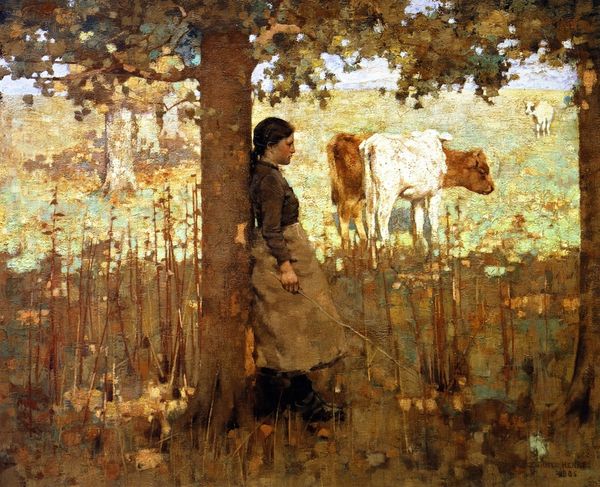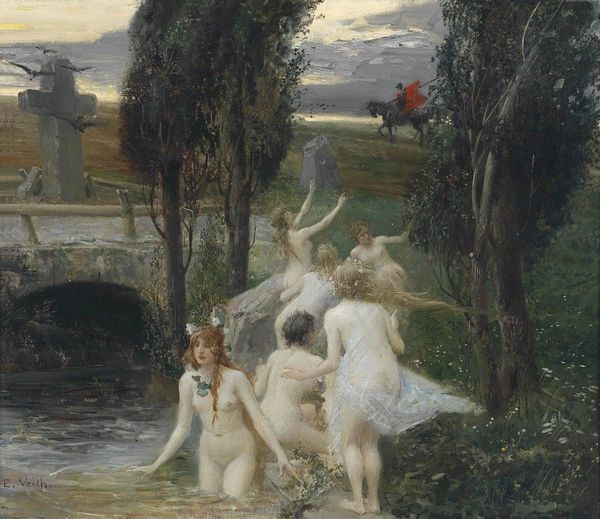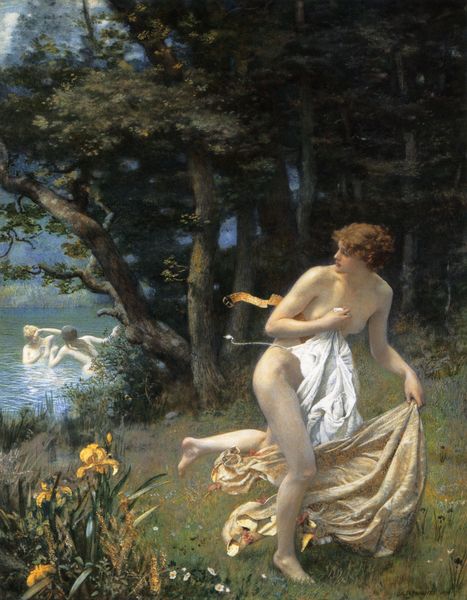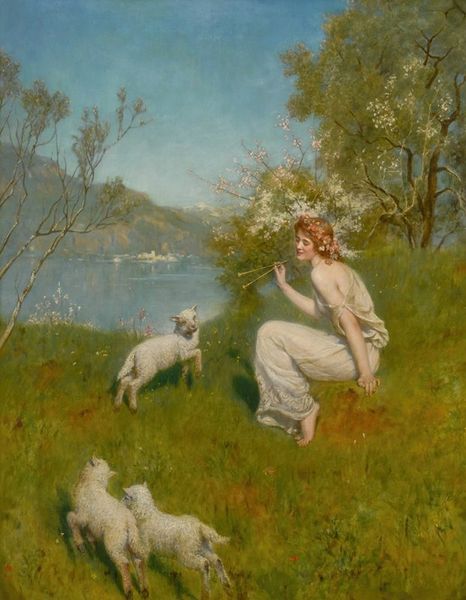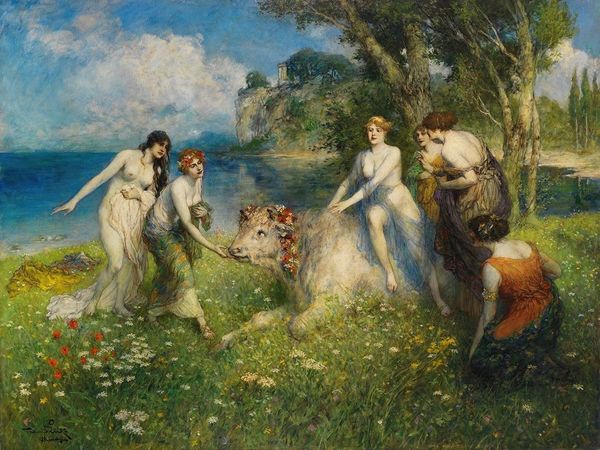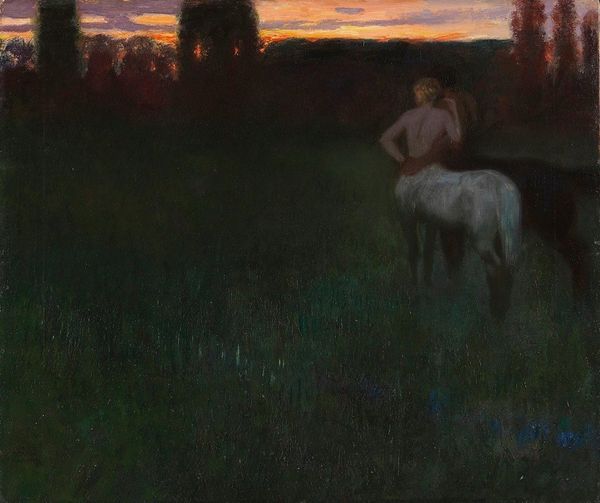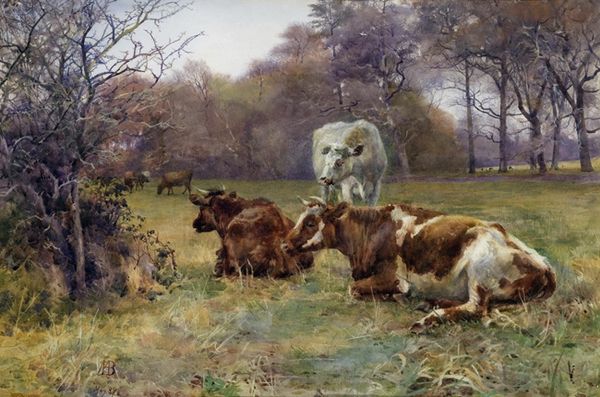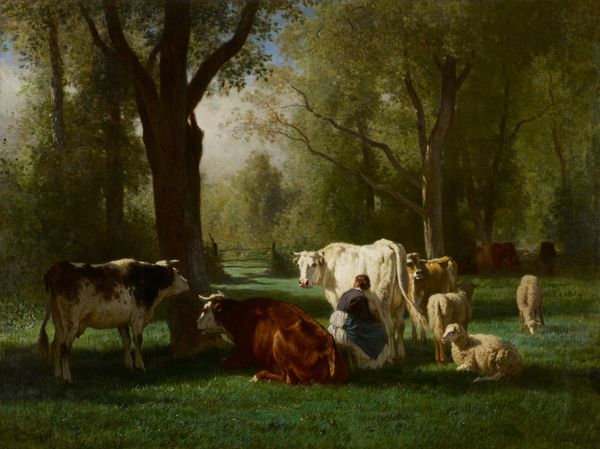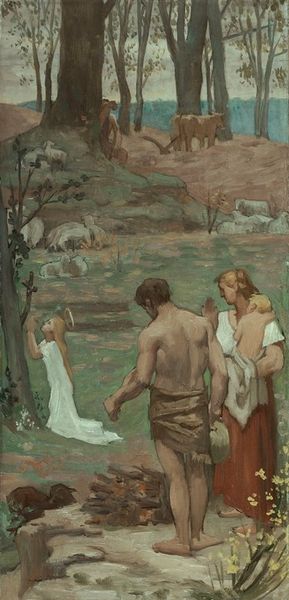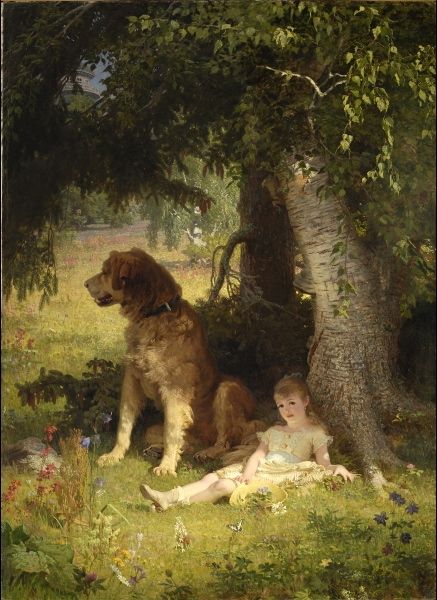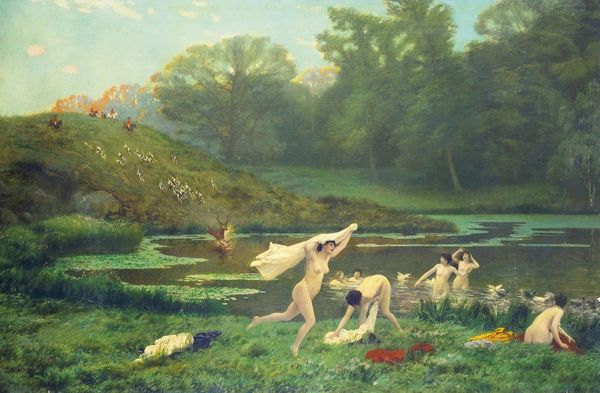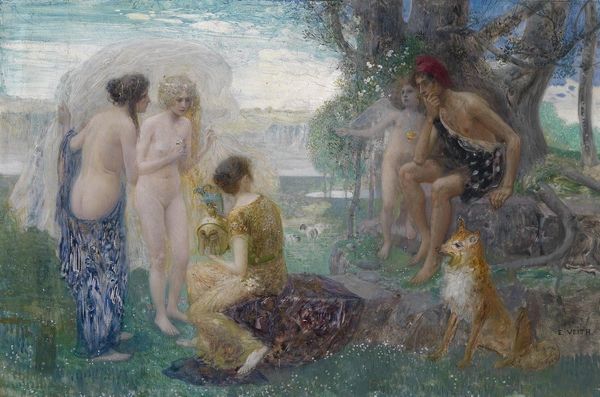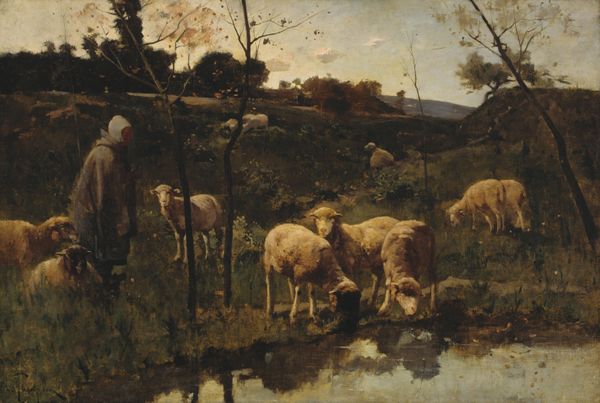
Dimensions: support: 852 x 1200 mm frame: 1232 x 1582 x 80 mm
Copyright: CC-BY-NC-ND 4.0 DEED, Photo: Tate
Curator: Arthur Lemon's "The Wooing of Daphnis," residing here at the Tate, plunges us into a pastoral scene, an idyll really. Editor: It's strikingly placid; that gentle light and the muted palette give everything a very serene feel. Curator: Yes, the composition guides the eye. Note how Lemon uses the trees as framing devices, drawing our attention to the figures and those… remarkably white cattle. The contrast between the dark woods and the pale figures creates a focal point. Editor: It's a very classical approach, isn't it? The idealized figures, the theme… It evokes a lost, golden age. Curator: Mmm, indeed. A world of shepherds and nymphs where even the cows seem to have read Virgil! One can feel the artist attempting to create a kind of Arcadia for the viewer. Editor: It certainly invites contemplation. A peaceful escape, really. Curator: So beautifully said, what a refreshing and balanced encounter.
Comments
http://www.tate.org.uk/art/artworks/lemon-the-wooing-of-daphnis-t07562
Join the conversation
Join millions of artists and users on Artera today and experience the ultimate creative platform.
The story of Daphnis and Chloë was a popular subject in Continental art in the nineteenth century. Lemon shows the nymph Chloë and her Sicilian herdsman in the Italian countryside, blissfully in love. In Greek mythology, Daphnis was the inventor of pastoral poetry, giving added resonance to Lemon’s idyllic scene of rural pleasure. Lemon was celebrated as a painter of pastoral Italian scenes, and genre subjects. Although born in Britain, he worked in Italy for much of his career, where he became associated with the Etruscan school of painters, led by Frederic Leighton and Giovanni Costa. Gallery label, August 2004
